Limescale, characterized by its hard, chalky deposits, results from the evaporation of water high in calcium and magnesium, leaving minerals behind. This prevalent issue in homes with hard water impacts appliances, plumbing, and aesthetics, highlighting the importance of effective strategies for how to get rid of limescale. Successfully addressing limescale not only extends the life of household appliances but also ensures efficient water flow and upholds the visual appeal of water fixtures.
What is limescale?
Limescale, or calcium carbonate (CaCO3), is a chalky deposit resulting from hard water, which is rich in dissolved minerals like calcium and magnesium. This hard water percolates through limestone, chalk, or gypsum, carrying these minerals. Limescale forms on surfaces and within appliances and pipes where hard water evaporates, leaving behind these minerals. It accumulates more rapidly with hot water but can also build up from cold water, affecting appliances, plumbing, and fixtures by creating a layer that can lead to inefficiency and damage.
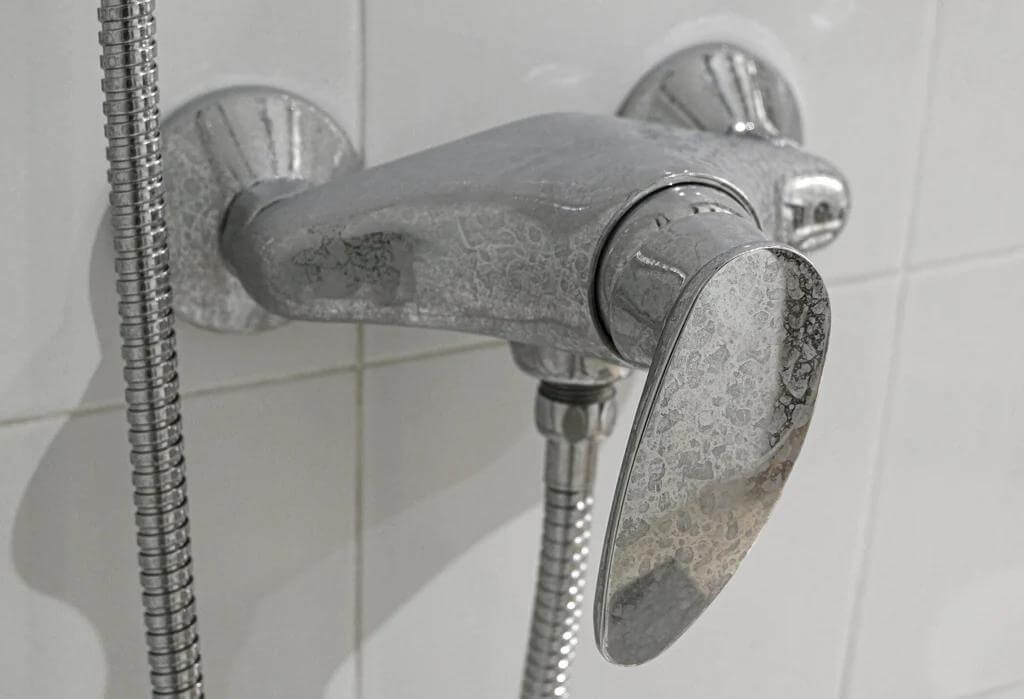
Is limescale dangerous?
Limescale itself is not considered dangerous to human health; it is primarily a composition of calcium carbonate, which is not harmful if consumed in small quantities found in water. However, limescale can cause damage to water appliances and plumbing by reducing their efficiency and lifespan. In terms of water quality, the presence of limescale can affect the taste and appearance of water but does not pose a health risk. The main concerns with limescale relate more to the maintenance of household appliances and the aesthetic aspect of water fixtures rather than direct health issues.It can even impact the hair and skin. Let’s look at a few of these issues in more detail:
Nasty-looking white stains
Limescale is notorious for leaving unsightly marks across a multitude of surfaces. From white blemishes to brown, grimy circles in toilets and sinks, its presence is hard to ignore. It can block shower heads and tarnish the appearance of tiles, rendering them lifeless and murky. Cleaning these persistent stains can often prove to be a significant challenge, making limescale a troublesome issue to contend with in household maintenance.
Damage water-using appliances
The mineral-rich hard water is a significant adversary for appliances utilizing water, accelerating the transformation from soluble to insoluble forms of calcium inside devices like kettles and water heaters. This process forms a limescale layer that drastically diminishes their efficiency. Similarly, dishwashers and washing machines face obstructions in their components due to limescale, affecting their operation and potentially leading to damage. This necessitates more frequent upkeep and possibly earlier replacement of these household essentials.
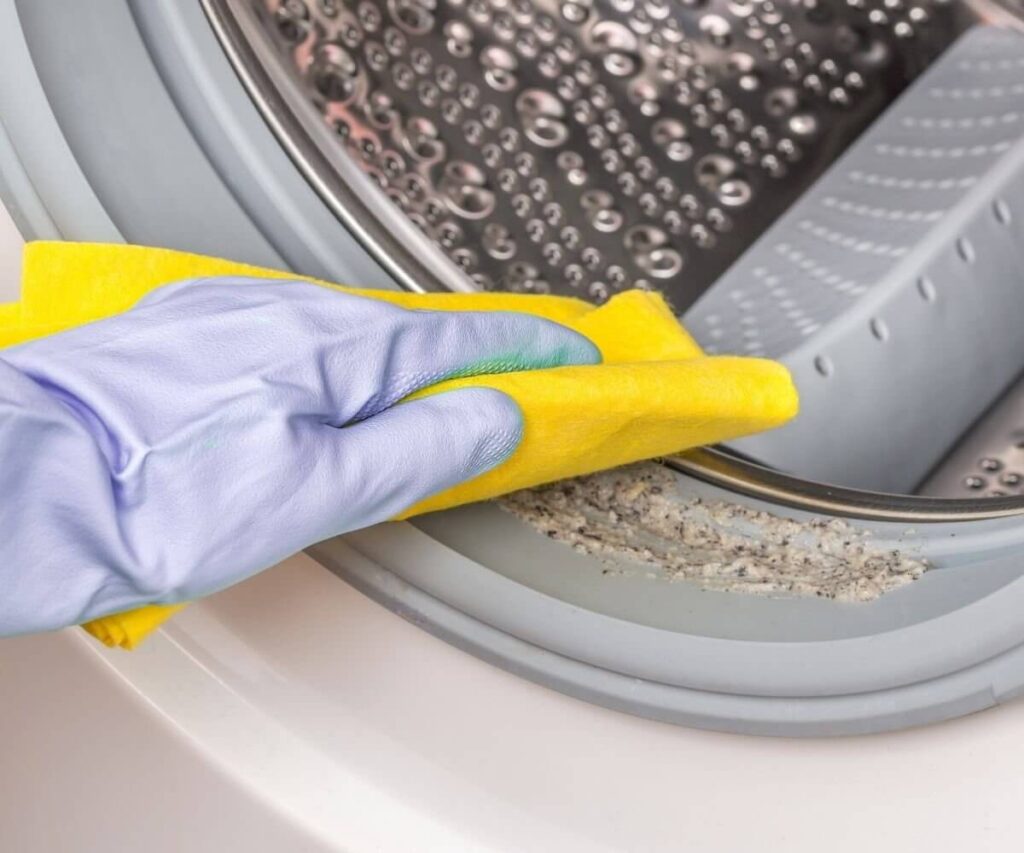
Decreases water pressure by clogging pipes
Experiencing a drop in water pressure? This often signals limescale buildup in your plumbing, leading to blocked pipes and fixtures, which can severely restrict water flow. The consequences include slow-filling appliances, diminished shower strength, and potentially costly repairs or replacements due to clogged or leaking pipes.
Skin Irritation
Hard water’s high mineral content can adversely affect skin health by clogging pores and drying out the skin. The calcium in hard water may disrupt the skin’s natural oil production, leading to a lack of moisture. Additionally, soap does not dissolve well in hard water, leaving a residue that can irritate the skin, potentially leading to conditions like acne, eczema, and other skin irritations. For those with sensitive skin or conditions like eczema, hard water might exacerbate these issues, affecting not just the skin but also the scalp, causing dryness and discomfort.
Dry Hair
Hard water’s residue can interfere with hair care, making it difficult to fully remove shampoos and conditioners. This can leave residue on the scalp, potentially leading to hair issues despite frequent washing. Hard water may contribute to hair loss, breakage, dryness, and an itchy scalp, while also affecting the lathering of shampoo and leaving hair feeling unclean, dull, and brittle. Color-treated hair might fade faster, necessitating more frequent coloring and potentially causing further damage.
What Does Limescale Typically Look Like?
Limescale varies in form, often presenting as a white or slightly off-white crusty layer, with a texture that can feel rough or sandy.
- Showerheads: Hard water leads to unavoidable limescale, forming dingy, pale deposits around the nozzle openings and edges.
- Faucets and Taps: You’ll find limescale as coarse, white encrustations at the faucet base, occasionally looking like miniature stalactites.
- Bathroom Tiles: Expect to see limescale as fine, white flecks or lines, which may expand and blend into larger, uneven areas over time.
- Toilet Bowls: Here, limescale manifests as tough, colored rings at the waterline, presenting a textured, solidified layer that stubbornly adheres.
- Kitchen Sinks: Look for white rings and powdery layers near the drain and basin, especially noticeable in stainless steel fixtures.
- Appliances: Limescale builds up as stiff, pale coatings on the inner parts of appliances such as kettles and washing machines, giving a gritty texture.
- Glassware and Dishes: Hard water washing leaves whitish spots or a filmy haze on these items, rendering their surfaces slightly abrasive.
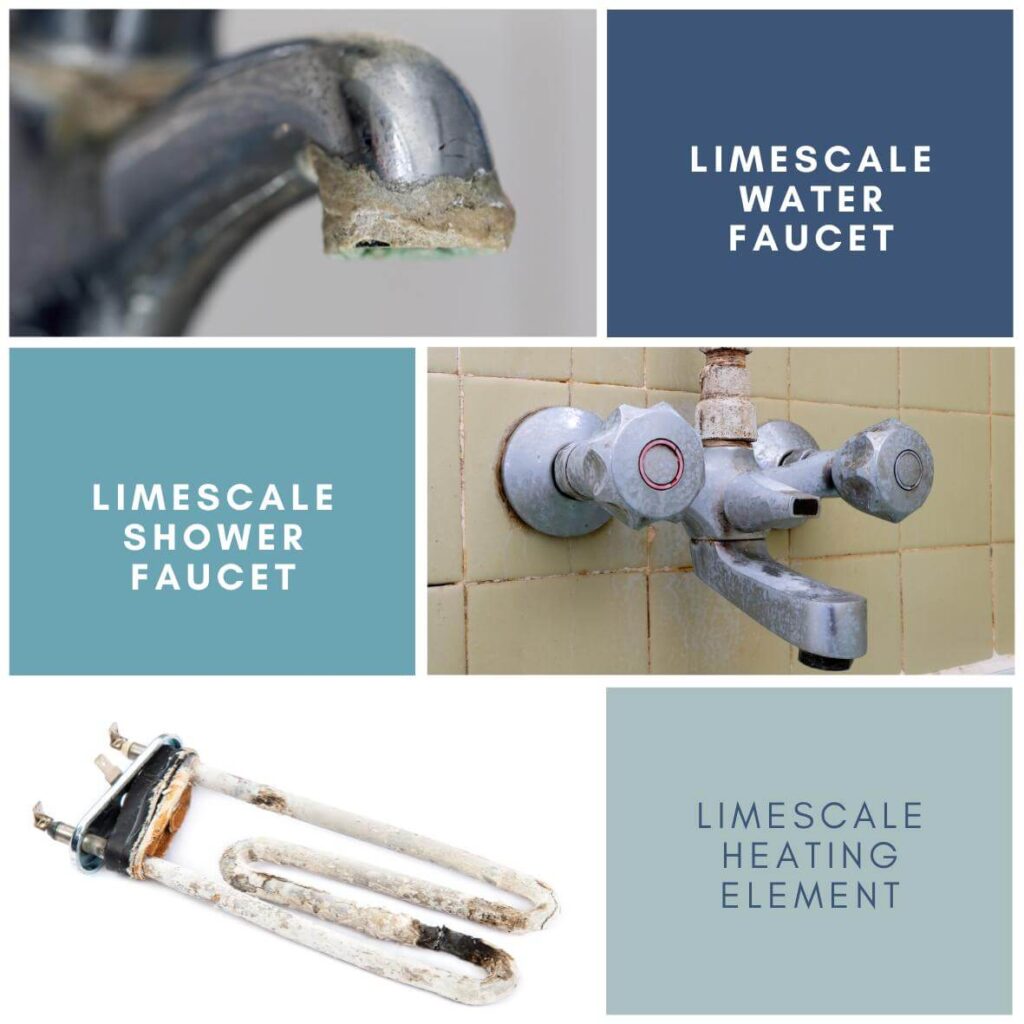
How to get rid of limescale?
To effectively remove tough limescale buildups, applying white vinegar or lemon juice to the affected spots is highly recommended. For challenging areas like taps, showerheads, and drains, a detailed guide can simplify the descaling process, ensuring a limescale-free outcome.
What you’ll need
Although these gentle, natural cleaning products might seem harmless, they can cause skin irritation, and lemon can act as a bleaching agent when exposed to sunlight. Be sure to wear gloves throughout the whole process and protect your clothing.
Here’s what you’ll need for at-home limescale removal treatments:
- Lemon juice or white vinegar
- Cleaning cloths
- Elastic bands
- Scouring pads
- Spray bottle
Remove limescale from taps
Taps present a cleaning challenge due to their exposure to hard water. Direct application of lemon juice or vinegar tends to run off before it can act on the limescale. Concentrating on the spout, where white deposits are common, is effective. Follow these steps for limescale-free taps:
- Drench a cloth in vinegar or lemon juice, wrapping it completely around the tap.
- Keep the cloth in place with a rubber band for one hour.
- Periodically press the cloth to enhance acid contact with the tap.
- After an hour, remove the cloth and clean off any limescale.
- For persistent limescale on the spout, affix a lemon half directly onto it.
- After leaving it for an hour, rinse and gently scrub off any remaining limescale, being cautious not to scratch the tap’s finish, especially when using a scouring pad on the spout’s underside.
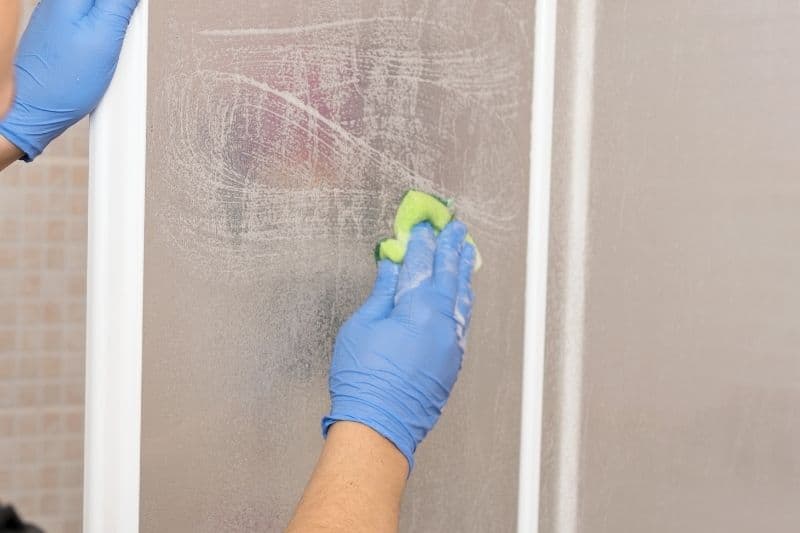
Get rid of limescale on tiles and plugholes
Clearing limescale from tiles and plugholes is straightforward compared to taps because you can apply the acid solution directly. Try these approaches:
- Dab either vinegar or lemon juice onto a cloth and vigorously scrub away the limescale.
- As another option, create a mixture of one part lemon juice or vinegar with four parts water. Transfer this mixture into a spray bottle, mist it over the tiles and plugholes, and let it sit for an hour for persistent limescale.
- Use any leftover mixture to polish the tiles or plughole until they’re spotless.
Remove limescale from toilets
Limescale can tarnish the appearance of your toilet bowl, yet numerous strategies exist for its removal. It’s crucial to don gloves and safeguard your eyes and attire from potential splashes during the cleaning operation.
- Combine lemon juice and white vinegar in equal measures and introduce this mixture into the toilet bowl. Allow it to sit for a minimum of an hour before employing a toilet brush for scrubbing. For optimal results, particularly against stubborn deposits, consider leaving the mixture to act overnight.
- Another effective method involves adding a cup of vinegar to the bowl, followed by a cup of baking soda. After permitting this solution to settle for about 10 minutes, proceed with scrubbing using a toilet brush.
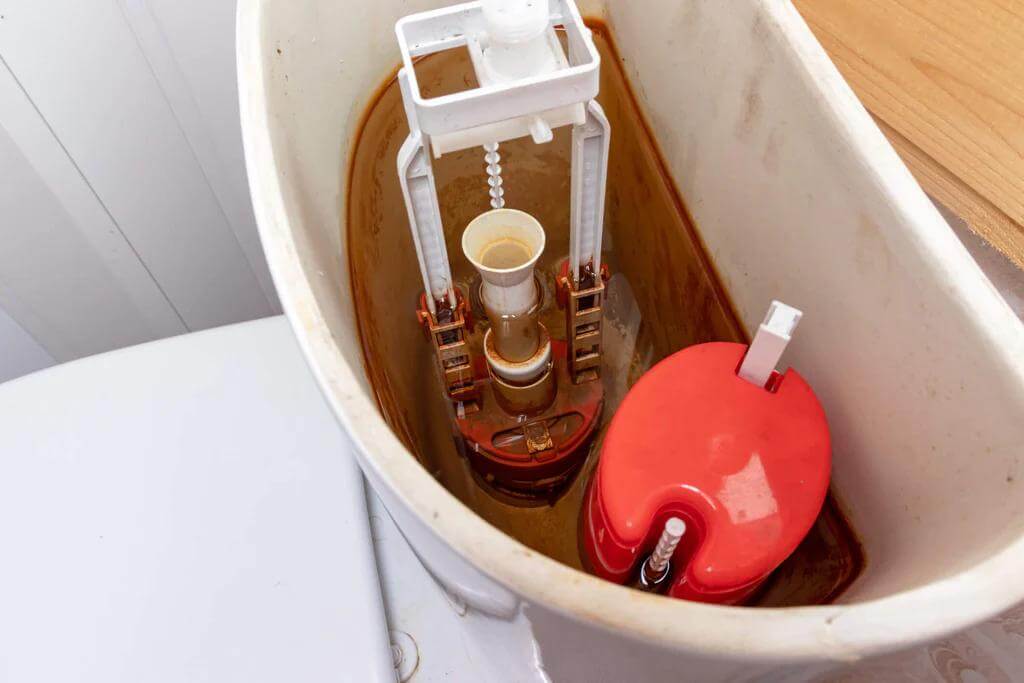
Get rid of limescale on your showerhead
- Detach the showerhead from either the wall pipe or the hose. You may do this by hand or use an adjustable wrench if it’s tight.
- Soak the showerhead fully in a mixture of vinegar within a plastic bag or a container, securing it with a rubber band or a tie. For a natural method, rub the cut sides of a lemon directly onto the showerhead.
- Leave the showerhead submerged or with lemon applied for at least an hour to break down the limescale.
- Following the soak, take the showerhead out and gently clean it using an old toothbrush or a soft brush to remove any remaining limescale.
- Finally, rinse the showerhead well with soft water before reassembling it back to its position.
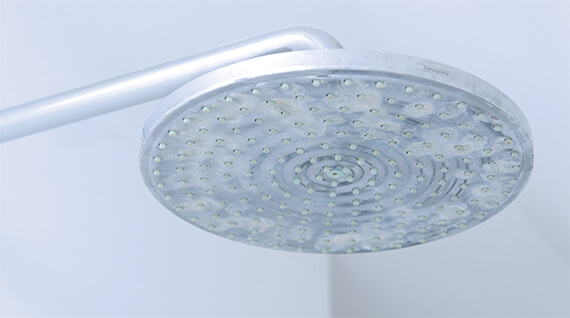
How to prevent limescale build-up?
For avoiding the hassle of frequent limescale removal, understanding effective prevention techniques is crucial. Here are some expert suggestions to keep limescale at bay in your household:
- Washing Machines: Incorporate a water softener into your washing machine’s routine to fend off limescale accumulation, ensuring it operates efficiently for a longer time.
- Faucets and Showerheads: Attaching carbon filters to your home’s faucets and showerheads can significantly reduce limescale formation by filtering out hardness from water, promoting better water flow.
- Routine Cleaning: One of the most reliable methods to prevent limescale is to clean your home consistently. Regular upkeep prevents limescale from settling on your taps, tiles, toilets, and showerheads, maintaining their cleanliness.
What else can be done to prevent limescale?
Aside from regular cleaning and installing water softeners or filters, you can also prevent limescale by drying water fixtures after use to minimize mineral deposits. Using vinegar-based solutions for routine cleaning can help dissolve small deposits before they accumulate. Additionally, setting appliances like water heaters to a lower temperature can slow limescale formation. Ensuring your plumbing system is up to date and using water conditioners can also contribute to reducing limescale buildup in your home.
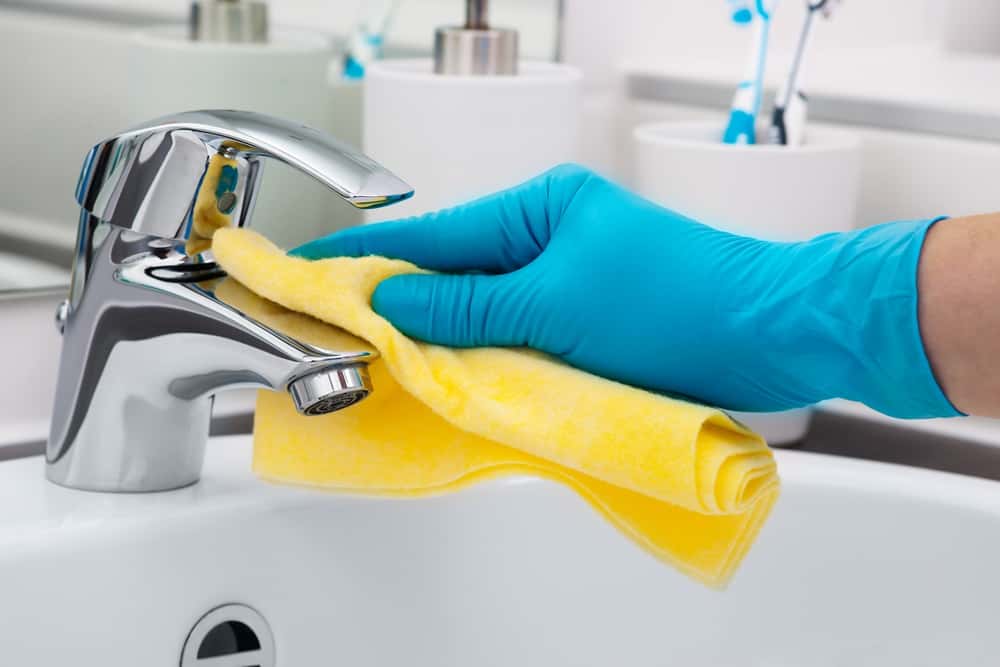
How Do Water Softeners or Water Filter Prevent Limescale?
Water softeners and filters prevent limescale by addressing the hard water that causes these deposits. Water softeners work by replacing calcium and magnesium ions, which are primarily responsible for water hardness, with sodium ions, thereby reducing the water’s ability to form limescale. Water filters, particularly those designed to reduce hardness, can remove or alter the minerals in the water, preventing them from depositing as limescale on surfaces and appliances. Both methods improve water quality and extend the lifespan of household plumbing and appliances by minimizing limescale buildup.
Conclusion
To effectively combat limescale, incorporating a blend of prevention and treatment strategies is essential. Utilizing water softeners or filters can significantly reduce the minerals responsible for limescale, while routine cleaning with acidic solutions like vinegar or lemon juice can dissolve existing deposits. Ensuring appliances and surfaces are dry will also help prevent the buildup of limescale. By adopting these measures, you can protect your home’s plumbing and appliances, prolonging their lifespan and maintaining efficiency.
FAQ
- What causes limescale to form in home water systems?
- Limescale forms when hard water, rich in calcium and magnesium, evaporates and leaves mineral deposits behind.
- How can I tell if I have a limescale problem?
- Signs include white, chalky residue on faucets, showerheads, and appliances, reduced water pressure, and inefficient appliance operation.
- Do water softeners really prevent limescale buildup?
- Yes, by exchanging the minerals in hard water with sodium, water softeners can significantly reduce limescale formation.
- Can installing a water filter reduce limescale in my water?
- Certain types of filters can remove minerals from hard water, thus reducing limescale.
- What natural remedies are effective for removing limescale?
- Vinegar and lemon juice are acidic and can dissolve limescale deposits effectively.
- How often should I clean appliances to prevent limescale accumulation?
- Regular cleaning, at least monthly, is recommended to prevent significant buildup.
- Is limescale harmful to my health?
- Limescale itself isn’t harmful if ingested in small amounts, but it can harbor bacteria in water systems.
- Can limescale damage my plumbing or appliances over time?
- Yes, it can reduce efficiency, block pipes, and shorten appliance lifespans.
- What’s the difference between hard water and soft water regarding limescale?
- Hard water contains minerals that cause limescale; soft water has fewer minerals and thus less potential for limescale.
- How can I test my water for hardness levels to assess limescale risk?
- Use a water hardness test kit, available online or at hardware stores, to measure the mineral content in your water.
